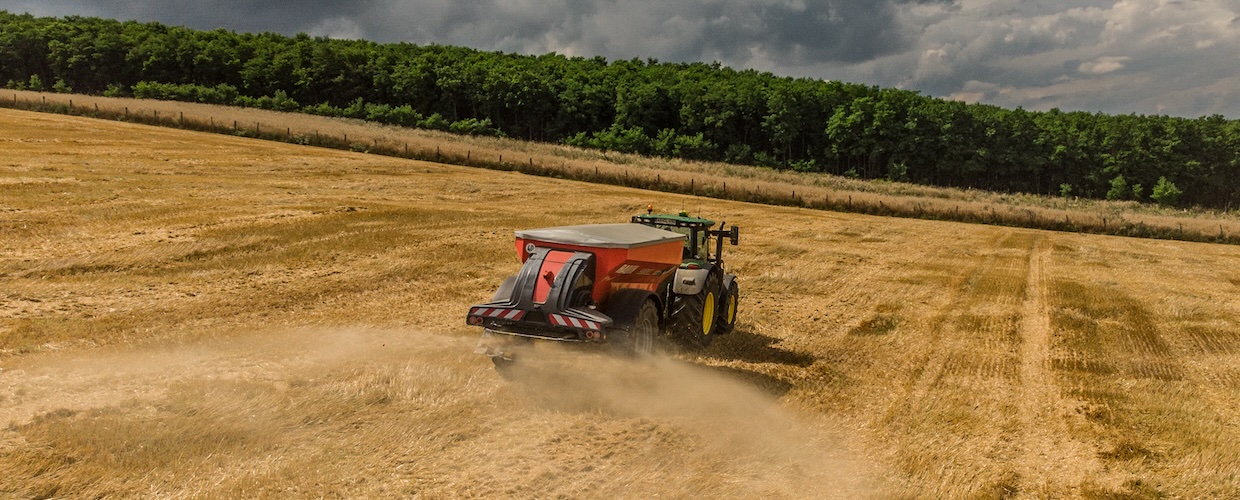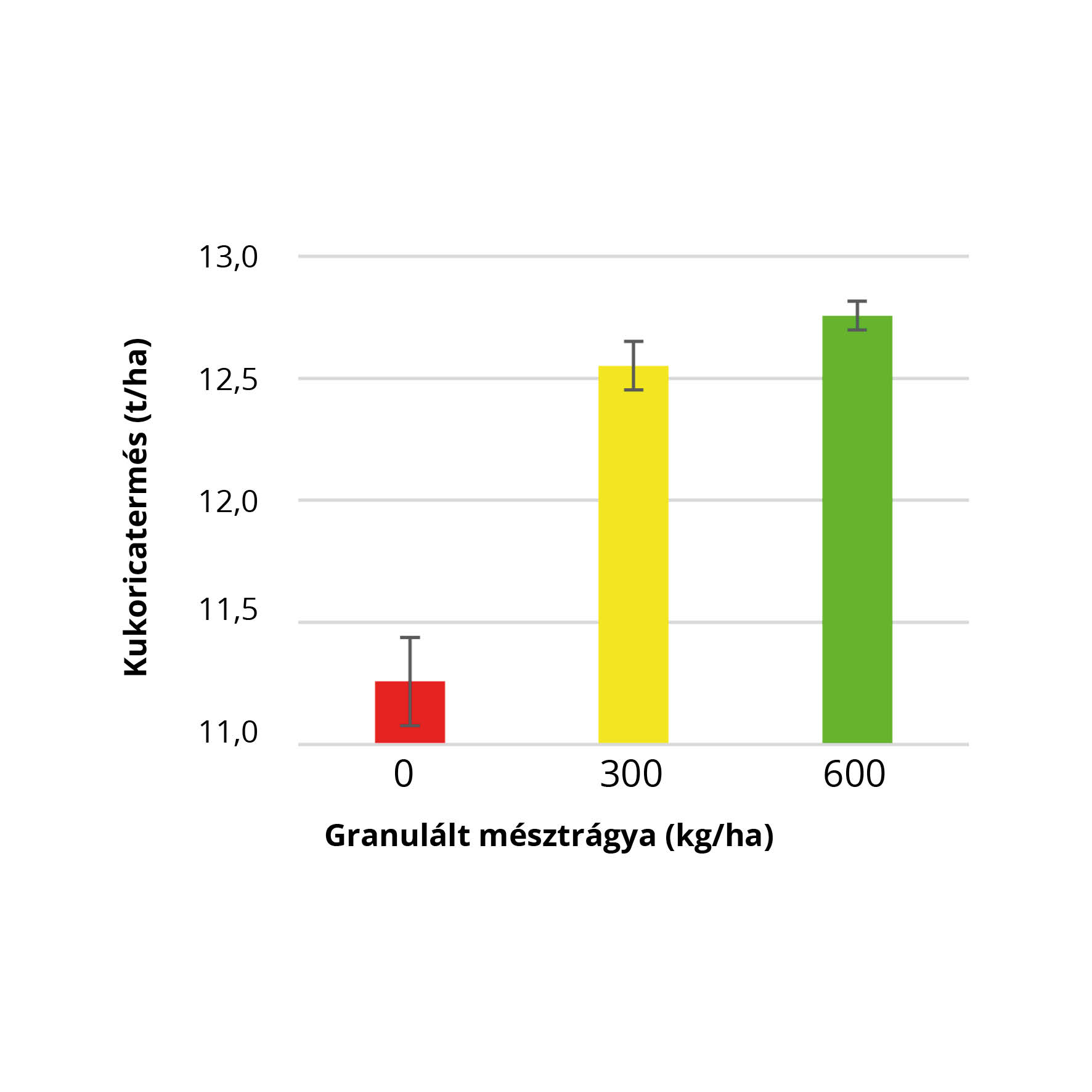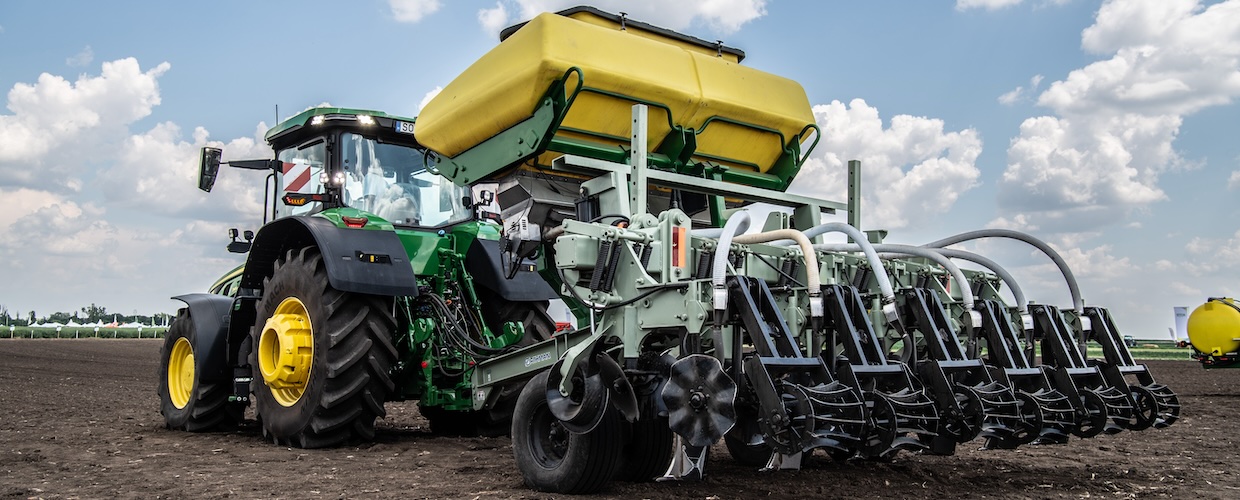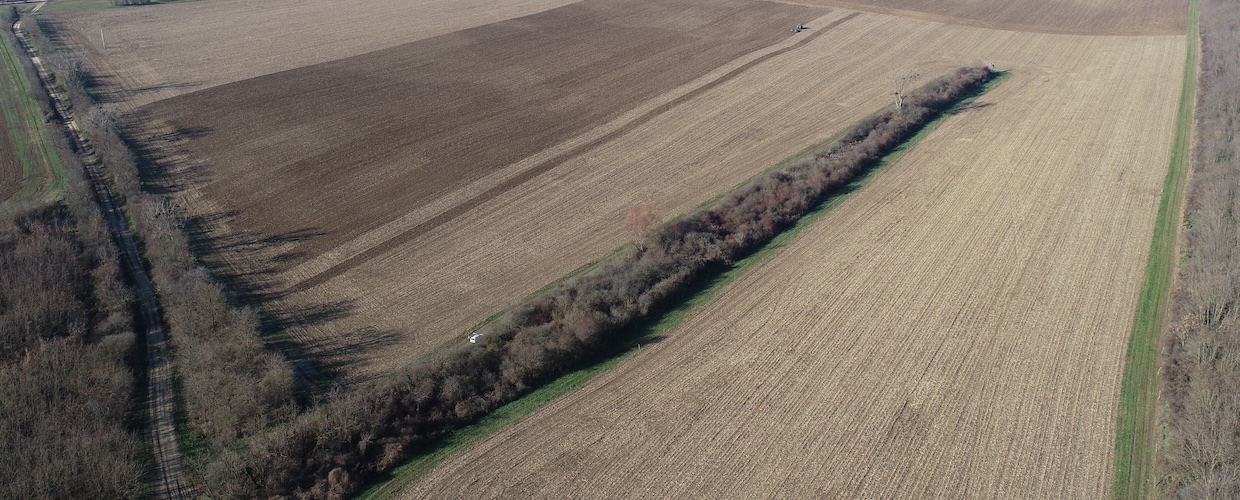
One of Hungary’s most important natural resources is the topsoil. Our soils are unique in their diversity as well as their fertility. However, this resource is only renewable if certain conditions are met: maintaining and preserving its productivity requires constant and deliberate activity. The result of conventional tillage is the inevitable deterioration of the soil structure.
There are different methods of soil improvement. These can be broadly categorized as physical, biological, and chemical methods.
Physical soil improvement methods include deep ripping , which loosens compacted and poorly drained soils. The purpose of deep tillage is to break up the compacted, near-surface layer of soil that has unfavorable physical properties. As a result, the soil becomes more aerated and its infiltration improves. Agricultural drainage facilitates the removal of excess water that has fallen on the ground and accumulated in the soil, through the use of an extraction (agricultural-drainage) system installed in the deeper layers of the soil. Land (or surface) drainage is the removal of harmful excess water through an appropriate surface drainage system.
Biological soil improvemen refers to all those interventions that also promote soil improvement through the cultivation of appropriately selected plants. Such methods include, for example, the usage of cover crops on sandy areas, or when the loosening effect of the strong root systems of certain plants improves the water and air regulation capacity of the compacted soil. The root system breaks through and loosens the compacted layers, creating favorable conditions for later crops.
Chemical soil improvement comprises procedures aimed at eliminating the adverse chemical properties of soil and at enhancing its chemical properties. The solution for the improvement of acid soils is liming. Substances containing calcium carbonate (CaCO3) are added to the soil to eliminate or reduce high acidity and unsaturation.
Let’s establish the prerequisites for crop production!
The acidity of the soil affects cultivated plants in many ways. The ability of plants to absorb nutrients, as well as toxic elements, varies depending on pH. If the pH of the soil is below 5.5, the quantity of Al3+ and Mn2+ ions increases, and this has a toxic effect on plants. The effect of acidity on the absorption of nutrients is also generally negative, resulting in the formation of iron and aluminum phosphate or in delayed mineralization and nitrification due to a reduction in biological activity. The lack of Ca ions inhibits the formation of a stable crumbly soil structure, and therefore water retention and reaction for the tillage are also poor.

Consultancy on precision soil improvement and lime application
Plants can tolerate the adverse effects of acidity to varying degrees. While for plants sensitive to acidity (such as alfalfa), a soil pH above 6.5 is optimal, for less sensitive plants – the majority of our important field crops – a pH of 6 is sufficient. Therefore, as a first step, we determine the desired “target pH”, then, knowing the current (pH H2O) and total (y1) acidity, we calculate the amount of lime required to achieve this for each zone using the algorithm developed by KITE.
What does lime application mean these days?
Today, lime application generally means relatively small-rate liming carried out using fast-acting soil improvement materials. High-quality granulated lime can also be spread using the precision fertilizer application equipment, and if the dose is selected correctly, these will result in a yield surplus in the given year without permanently changing the chemical parameters of the soil. For years, our expert staff have been investigating the relationship between lime application and yield at different fields. The figure below shows the results of a precision lime application experiment on soil patches with a KCl pH value below 5.5 (Nagycserkesz, 2018). Although the lime application rate is not sufficient to result in a substantial increase in the pH of the soil, its effect in terms of increasing the yields of the given year is significant. However, to achieve this, we need to determine the rate of lime to be applied based on our knowledge of the latent and active acidity of the soil. That’s where KITE’s specialist consultancy service on soil improvement and liming comes in.
Precision lime application experiments


Strip-till
In order to improve the soil structure, the tillage system must also be changed. Strip-till was adapted to Hungarian conditions by KITE, which is a conservation tillage practice. The Strip-tiller machine is a soil ripper that works on soil-loosening principle, but does not disturb the entire surface, and as a result, we obtain high-quality, cultivated strips 25-30 cm wide, loosened to a depth of 28 cm.

Variable depth tillage
Knowing the relief of the field, we calculate the rate of expected soil loss, and reduced depth tillage is carried out on the vulnerable zones of the field, increasing the amount of remaining residues and reducing the rate of soil disturbance, thus improving soil quality.

Our related services
- Preparation of a prescription map needed for precision soil improvement
- Planning of precision lime application for five years ahead, taking into account the needs of the crops concerned
- Precision equipment contractor service (lime application, supply of ISOBUS-compatible fertilizer spreader)
- Rental of precision equipment
- From our selection of rental machines, we provide the tractor-plus-implement combination best suited to our partner’s needs for the purpose of precision-based tillage.
- Set-up of tractor and implement combination
- Ballasting recommendation
- Machine operation reports
- Special training at partner’s site
 magyar
magyar english
english serbian
serbian